Fabian Horst
Machine Learning in Biomechanics: Key Applications and Limitations in Walking, Running, and Sports Movements
Mar 05, 2025Abstract:This chapter provides an overview of recent and promising Machine Learning applications, i.e. pose estimation, feature estimation, event detection, data exploration & clustering, and automated classification, in gait (walking and running) and sports biomechanics. It explores the potential of Machine Learning methods to address challenges in biomechanical workflows, highlights central limitations, i.e. data and annotation availability and explainability, that need to be addressed, and emphasises the importance of interdisciplinary approaches for fully harnessing the potential of Machine Learning in gait and sports biomechanics.
On the Understanding and Interpretation of Machine Learning Predictions in Clinical Gait Analysis Using Explainable Artificial Intelligence
Dec 16, 2019
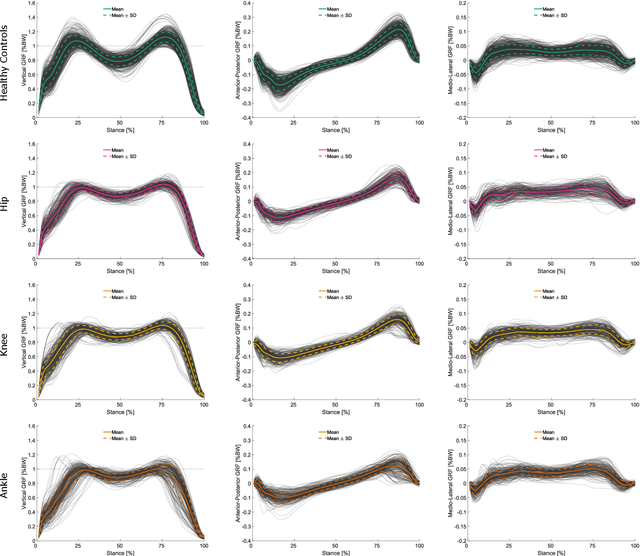

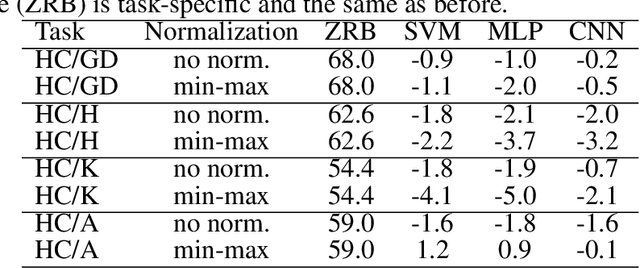
Abstract:Systems incorporating Artificial Intelligence (AI) and machine learning (ML) techniques are increasingly used to guide decision-making in the healthcare sector. While AI-based systems provide powerful and promising results with regard to their classification and prediction accuracy (e.g., in differentiating between different disorders in human gait), most share a central limitation, namely their black-box character. Understanding which features classification models learn, whether they are meaningful and consequently whether their decisions are trustworthy is difficult and often impossible to comprehend. This severely hampers their applicability as decision-support systems in clinical practice. There is a strong need for AI-based systems to provide transparency and justification of predictions, which are necessary also for ethical and legal compliance. As a consequence, in recent years the field of explainable AI (XAI) has gained increasing importance. The primary aim of this article is to investigate whether XAI methods can enhance transparency, explainability and interpretability of predictions in automated clinical gait classification. We utilize a dataset comprising bilateral three-dimensional ground reaction force measurements from 132 patients with different lower-body gait disorders and 62 healthy controls. In our experiments, we included several gait classification tasks, employed a representative set of classification methods, and a well-established XAI method - Layer-wise Relevance Propagation - to explain decisions at the signal (input) level. The presented approach exemplifies how XAI can be used to understand and interpret state-of-the-art ML models trained for gait classification tasks, and shows that the features that are considered relevant for machine learning models can be attributed to meaningful and clinically relevant biomechanical gait characteristics.
Systematic Comparison of the Influence of Different Data Preprocessing Methods on the Classification of Gait Using Machine Learning
Nov 11, 2019
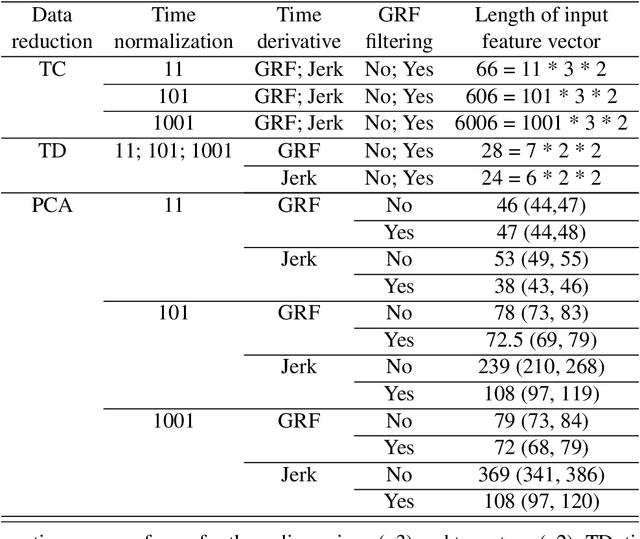
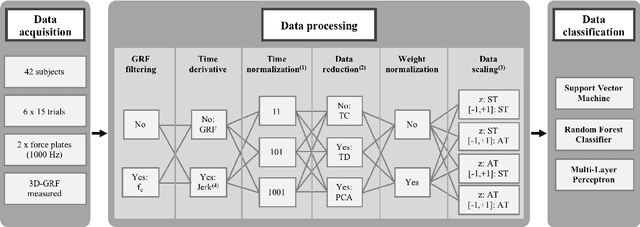
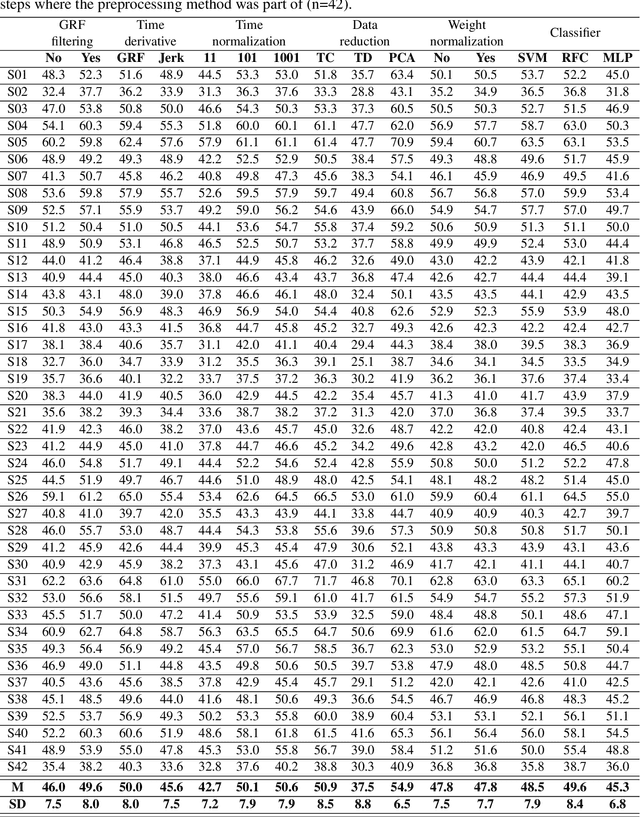
Abstract:Human movements are characterized by highly non-linear and multi-dimensional interactions within the motor system. Recently, an increasing emphasis on machine-learning applications has led to a significant contribution to the field of gait analysis e.g. in increasing the classification accuracy. In order to ensure the generalizability of the machine-learning models, different data preprocessing steps are usually carried out to process the measured raw data before the classifications. In the past, various methods have been used for each of these preprocessing steps. However, there are hardly any standard procedures or rather systematic comparisons of these different methods and their impact on the classification accuracy. Therefore, the aim of this analysis is to compare different combinations of commonly applied data preprocessing steps and test their effects on the classification accuracy of gait patterns. A publicly available dataset on intra-individual changes of gait patterns was used for this analysis. Forty-two healthy subjects performed 6 sessions of 15 gait trials for one day. For each trial, two force plates recorded the 3D ground reaction forces (GRF). The data was preprocessed with the following steps: GRF filtering, time derivative, time normalization, data reduction, weight normalization and data scaling. Subsequently, combinations of all methods from each individual preprocessing step were analyzed and compared with respect to their prediction accuracy in a six-session classification using Support Vector Machines, Random Forest Classifiers and Multi-Layer Perceptrons. In conclusion, the present results provide first domain-specific recommendations for commonly applied data preprocessing methods and might help to build more comparable and more robust classification models based on machine learning that are suitable for a practical application.
What is Unique in Individual Gait Patterns? Understanding and Interpreting Deep Learning in Gait Analysis
Aug 13, 2018
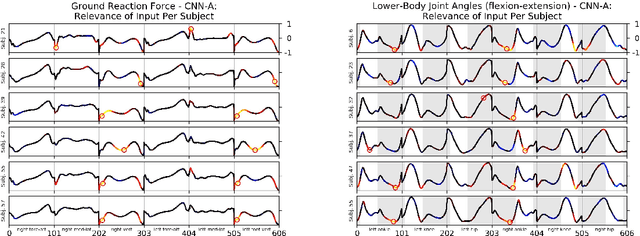


Abstract:Machine learning (ML) techniques such as (deep) artificial neural networks (DNN) are solving very successfully a plethora of tasks and provide new predictive models for complex physical, chemical, biological and social systems. However, in most cases this comes with the disadvantage of acting as a black box, rarely providing information about what made them arrive at a particular prediction. This black box aspect of ML techniques can be problematic especially in medical diagnoses, so far hampering a clinical acceptance. The present paper studies the uniqueness of individual gait patterns in clinical biomechanics using DNNs. By attributing portions of the model predictions back to the input variables (ground reaction forces and full-body joint angles), the Layer-Wise Relevance Propagation (LRP) technique reliably demonstrates which variables at what time windows of the gait cycle are most relevant for the characterisation of gait patterns from a certain individual. By measuring the timeresolved contribution of each input variable to the prediction of ML techniques such as DNNs, our method describes the first general framework that enables to understand and interpret non-linear ML methods in (biomechanical) gait analysis and thereby supplies a powerful tool for analysis, diagnosis and treatment of human gait.
 Add to Chrome
Add to Chrome Add to Firefox
Add to Firefox Add to Edge
Add to Edge